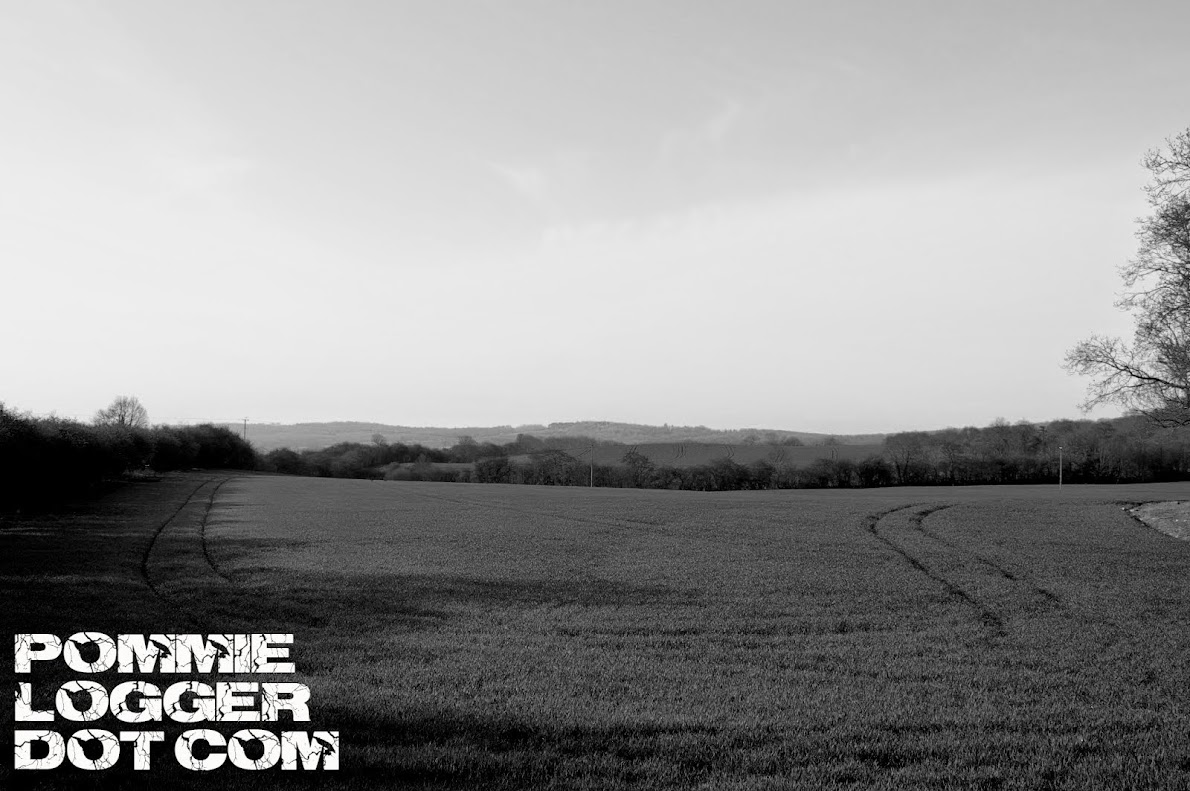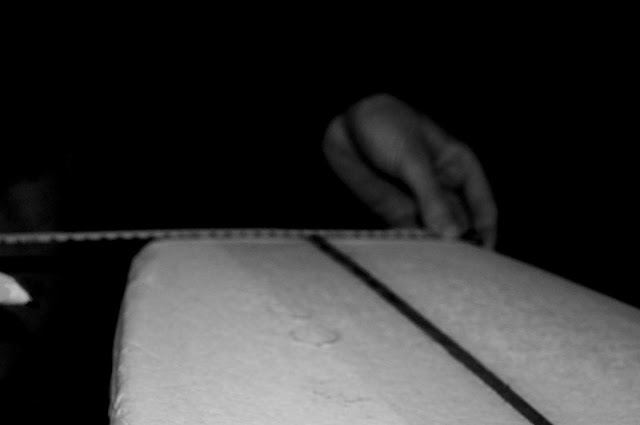Jamie Beck and Kevin Burg's work, animating small amounts of stills to give digital images another dimension - i wonder how far we are from hanging this stuff on our walls. Pretty clever work.
Thursday, June 30, 2011
Sunday, June 26, 2011
Thursday, June 23, 2011
Tuesday, June 21, 2011
Sunday, June 19, 2011
Friday, June 17, 2011
Monday, June 13, 2011
BING FOR SALE!
craig woma's beautiful Bing Silver Spoon longboard is for sale. Its a beauty!
click me to see the ebay page
click me to see the ebay page
Friday, June 10, 2011
a mctavish how to
| (a) DEEP BOTTOM TURN is virtually a stall, as you are holding back from travelling across the wall till the hook is hovering overhead. When you actually lean into the turn there is a redirection of momentum gained by taking the drop, so it's also an obscure manner of acceleration. Fig. 1 |
| (b) CURL ACCELERATION TURN is virtually a bottom turn minus stall. There is no wait while the hook catches up. This turn then, must be executed deeper, sometimes following a fade into the hook. The basic acceleration of the bottom turn is still there. Fig. 2. |
| (c) TOP RAIL PIVOT TURN, used to get hammering across the already hot wall, is hardly a turn at all, just a slight bank performed on the inside rail, on the widest point of the board. |
| (d) CUT BACK followed by one of the above turns is a pretty obvious way to jam back into the hook. Fig. 13 |
The turns indicate how to get into the action from below, above, or behind the eye. But to slip back into the pocket from ahead? Employ one of the many stalls. Try these.
| (a) THE TAIL STALL is the oldest, most obvious stall. By jamming all your weight on the back half, or less, of your board, means you bury the in- side half and fin pretty deep, creating a mean drag. The big hang-up with this stall is the acceleration that fol- lows, as it's a damn long way to the fast points from on the back. Very handy of course to allow you to get to the tip, and hold the stall from there for a while. Fig. 3 |
| Which leads us to ... (b) THE NOSE STALL. To perform this, simply bury the inside rail while on the tip. Most noserides are performed this way, b |
As the wave recovers and starts to wall, drop the fin in by back-peddling, recover some sort of trim, and move out. Nat Young and I spent two days at Noosa working on this, succeeded about four times each. The big problem is knowing just when the fin is going to break out. We are working on special nose and fin shapes for this purpose. Fig. 14 Right: There are the various techniques of getting in the tight spots. Get your jollies back in there, and then try to get out, and make the wave. To get out of the hot parts you'll need three things. Acceleration, speed, knowledge of handling trouble spots. A few handy acceleration techniques. |
shaping day 2
tonight... the template, first cut into foam, and removing the crust...dirty work
things are slowly taking shape, and my eyes are full of PU...fun times.
things are slowly taking shape, and my eyes are full of PU...fun times.
Thursday, June 9, 2011
shaping day 1
my first adventure into shaping, with Nick. Adventures and inevitable mishaps to follow! -the more you measure, the more complex the whole picture becomes.
nicks blank
(squint) how thick!?
wide
Tuesday, June 7, 2011
Monday, June 6, 2011
thoughts
I'm not sure what kind of surfer i am, I'm even less certain what kind of "person" i am. I know that i have a pretty poor work ethic, but am enthusiastic and passionate and committed to some things in my life. Surfing is one of them, but its just one of them. Cooking for friends, my wife, taking pictures, writing with a fountain pen, these are other passions. But surfing eclipses most of them, i don't know why, not sure that i want to know, theres a mystery to it, an unconscious 'drive'.
There are some days when i don't feel like riding waves, even when they are small and clean and good - some days i just don't want to ruin the great waves i have in my mind with the waves i will ultimately ride, poorly.
Im not a great surfer, but i do love what i can do. Im barely above an average surfer, but i think im getting better. I know what I like, small waves, no bigger than me, with just a few others to share them with, these times are getting rarer - im becoming less interested in surfing "those" spots, most people know where i like to go, it might not be great, its slow, but sometimes its just me out there. Those days are rarer still.
There are some days when i don't feel like riding waves, even when they are small and clean and good - some days i just don't want to ruin the great waves i have in my mind with the waves i will ultimately ride, poorly.
Im not a great surfer, but i do love what i can do. Im barely above an average surfer, but i think im getting better. I know what I like, small waves, no bigger than me, with just a few others to share them with, these times are getting rarer - im becoming less interested in surfing "those" spots, most people know where i like to go, it might not be great, its slow, but sometimes its just me out there. Those days are rarer still.
hatzikian
surfed the poss yesterday.... click here for Rons pics
and a twist of fate, the latest issue of the journal popped in my box today, page 22, a Devon Howard piece about the man himself...
Hot rodder, board builder, no-leash wearing, single-fin riding surfer. El Segundo’s Tyler Hatzikian is your man’s man. With hands constantly at work, he’s carved out a niche for himself in the heart of L.A.’s congested coastline. Taking board building cues from Hap Jacobs and Lance Carson, he’s rooted in tradition, but his sleds, as he puts it, “are designed as if the shortboard was never invented.”
and a twist of fate, the latest issue of the journal popped in my box today, page 22, a Devon Howard piece about the man himself...
Hot rodder, board builder, no-leash wearing, single-fin riding surfer. El Segundo’s Tyler Hatzikian is your man’s man. With hands constantly at work, he’s carved out a niche for himself in the heart of L.A.’s congested coastline. Taking board building cues from Hap Jacobs and Lance Carson, he’s rooted in tradition, but his sleds, as he puts it, “are designed as if the shortboard was never invented.”
Subscribe to:
Posts (Atom)


















